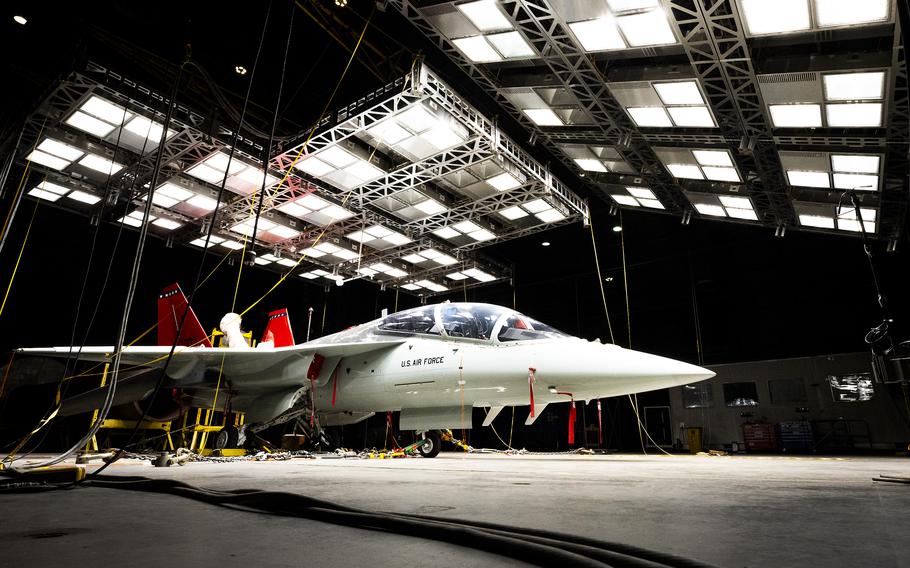
A T-7A Red Hawk sits under bright lights used to create heat in the McKinley Climatic Lab at Eglin Air Force Base, Fla. The Air Force’s newest training aircraft experienced temperature extremes from 110 degrees to minus 25 degrees Fahrenheit as well as heavy humidity during the month of testing. The tests evaluate how the aircraft, its instrumentation and electronics fared under the extreme conditions it will face in the operational Air Force. (Samuel King Jr./U.S. Air Force)
The U.S. Air Force’s new training aircraft can take the heat — and the cold.
A T-7A Red Hawk was put through its temperature paces during a monthlong extreme weather trial inside the McKinley Climatic Lab at Eglin Air Force Base, Fla., in order to “verify the new aircraft’s sustainability in any operational environment,” an Air Force news release said. During the trial, which concluded Friday, the aircraft sustained temperatures ranging from 110 degrees to minus 25 degrees Fahrenheit, along with heavy humidity conditions.
“We need to know the T-7A can operate in the environmental conditions it will encounter at pilot training bases around the country,” Dr. Troy Hoeger, chief development tester for the T-7 with the Air Force Lifecycle Management Center said in the release.
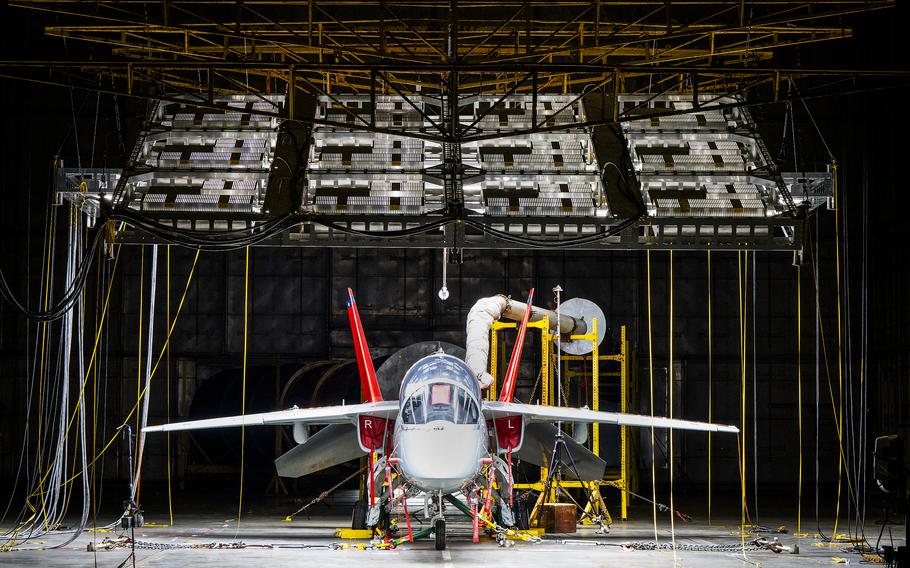
A T-7A Red Hawk sits under bright lights used to create heat in the McKinley Climatic Lab at Eglin Air Force Base, Fla. (Samuel King Jr./U.S. Air Force)
Much of the test schedule was dedicated to preparing the 55,000-square-foot chamber for the extreme conditions. McKinley’s technicians worked continuously to bring the chamber from superheated 100-degree desert conditions to below freezing conditions in a few days, the release said. Boeing and Air Force crews then performed system operations and engine runs to evaluate the aircraft’s reactions in those scenarios.
“McKinley Climatic Laboratory maintains quickness and technical proficiency by retaining our own staff of highly experienced welders, machinists, electricians, instrumentation experts, test assembly personnel and refrigeration operators,” lab flight chief Melissa Tate said. “Our main mission is to support the warfighter and to ensure any environment they encounter in the field; their equipment has already been proven in those extremes.”
The first T-7A was unveiled by Boeing at Lambert International Airport in St. Louis in 2022 and was one of 351 aircraft to be delivered under a $9.2 billion contract signed in 2018. Edwards Air Force Base in California received its first Red Hawk in November.
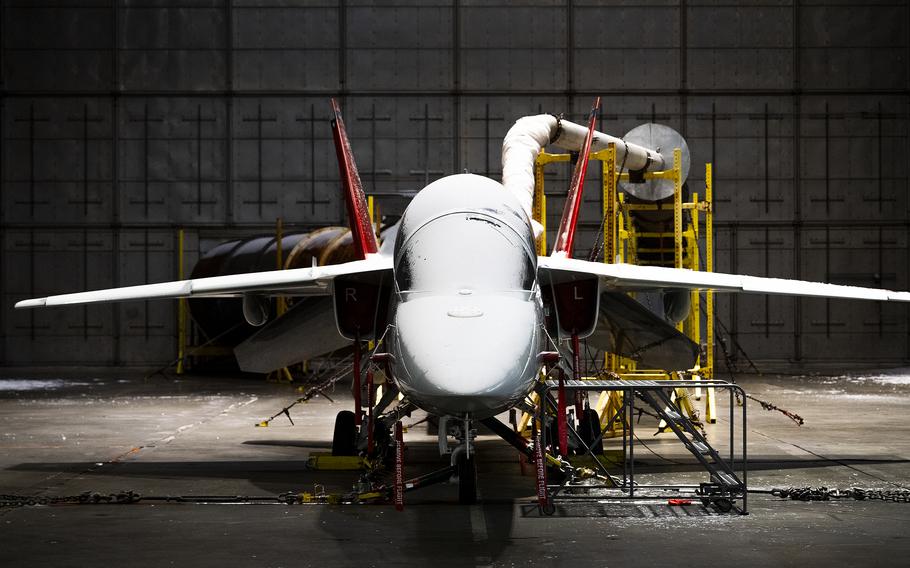
A T-7A Red Hawk sits in a frozen McKinley Climatic Lab chamber, Jan. 29, 2024, at Eglin Air Force Base, Fla. (Samuel King Jr./U.S. Air Force)
The aircraft will train airmen to fly fourth and fifth-generation fighters, such as the F-35, and is set to replace the Air Education and Training Compound’s T-38C Talon. Its red tail symbol and name are taken from the Curtiss P-40 Warhawk and the 99th Fighter Squadron, the first African American fighter squadron, Stars and Stripes previously reported.
The initial version of the T-38 made its debut in 1961 as the world’s first supersonic training aircraft. The Air Force has been plagued by several T-38 crashes in recent years, including an in-flight emergency that forced one pilot to eject from a T-38 over Columbus Air Force Base, Miss., in 2022. Two aviators were killed in 2019 — an instructor and a student — when their aircraft crashed on landing at an Oklahoma base. There were also several T-38 crashes in 2017 and 2018, including one that killed a pilot at Laughlin Air Force Base in Texas, Stars and Stripes previously reported.
After the climatic lab tests, the T-7A will return to Boeing to ensure the aircraft’s technical orders are safe and accurate for the operators and maintainers that will interact with it, the release said.
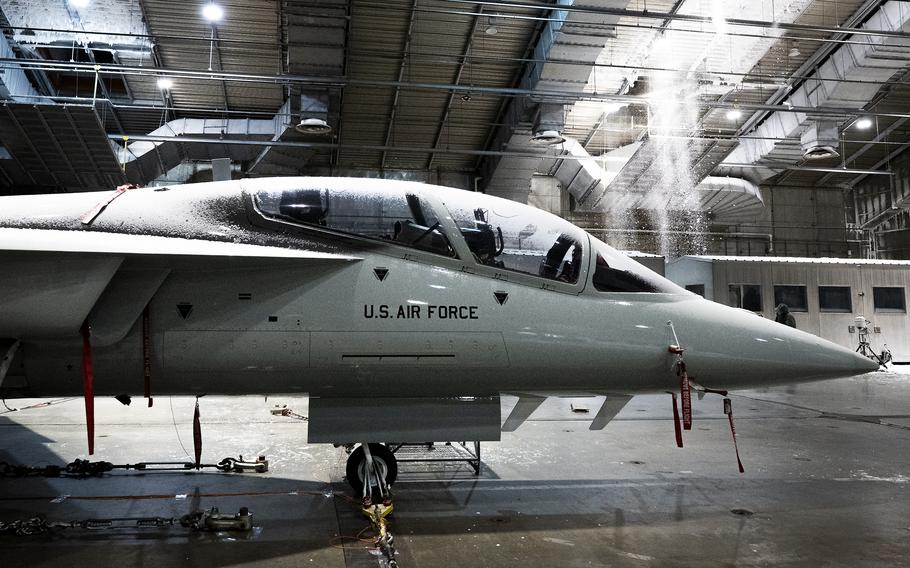
A T-7A Red Hawk sits in a frozen McKinley Climatic Lab chamber, Jan. 29, 2024, at Eglin Air Force Base, Fla. (Samuel King Jr./U.S. Air Force)
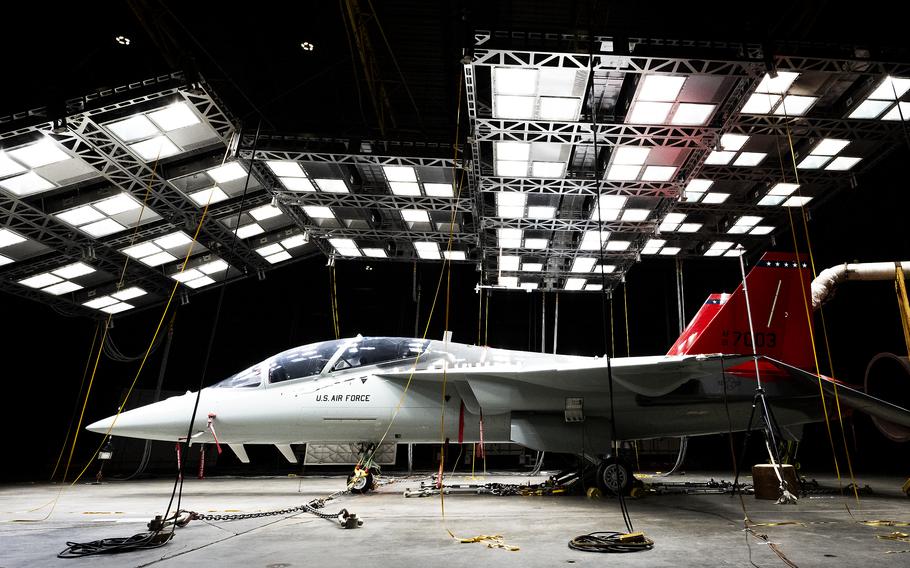
A T-7A Red Hawk sits under bright lights used to create heat in the McKinley Climatic Lab at Eglin Air Force Base, Fla. (Samuel King Jr./U.S. Air Force)
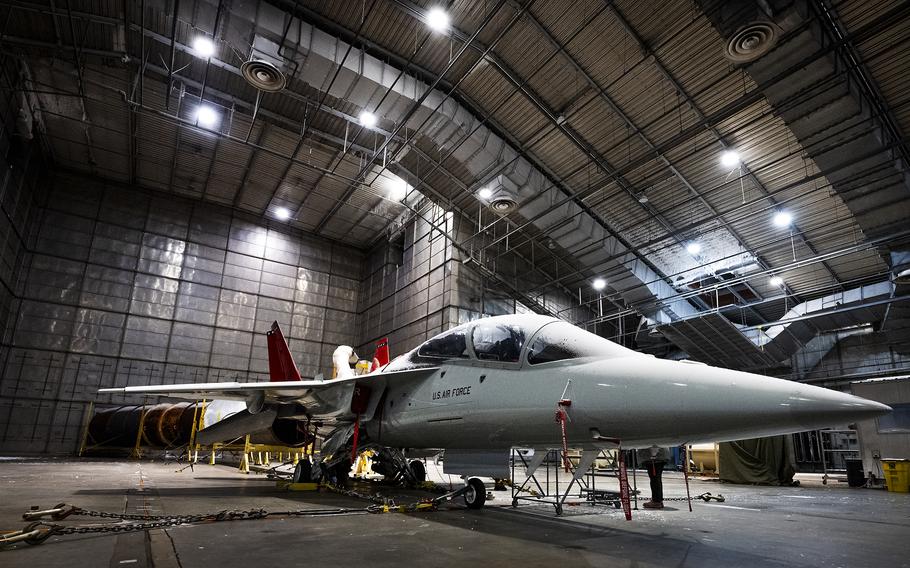
A T-7A Red Hawk sits in a frozen McKinley Climatic Lab chamber, Jan. 29, 2024, at Eglin Air Force Base, Fla. (Samuel King Jr./U.S. Air Force)
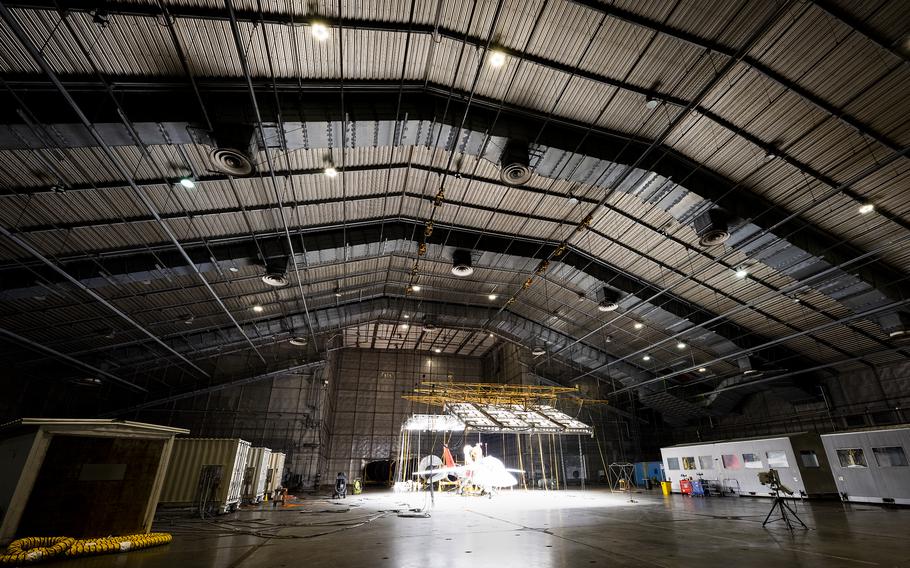
A T-7A Red Hawk sits under bright lights used to create heat in the McKinley Climatic Lab at Eglin Air Force Base, Fla. (Samuel King Jr./U.S. Air Force)